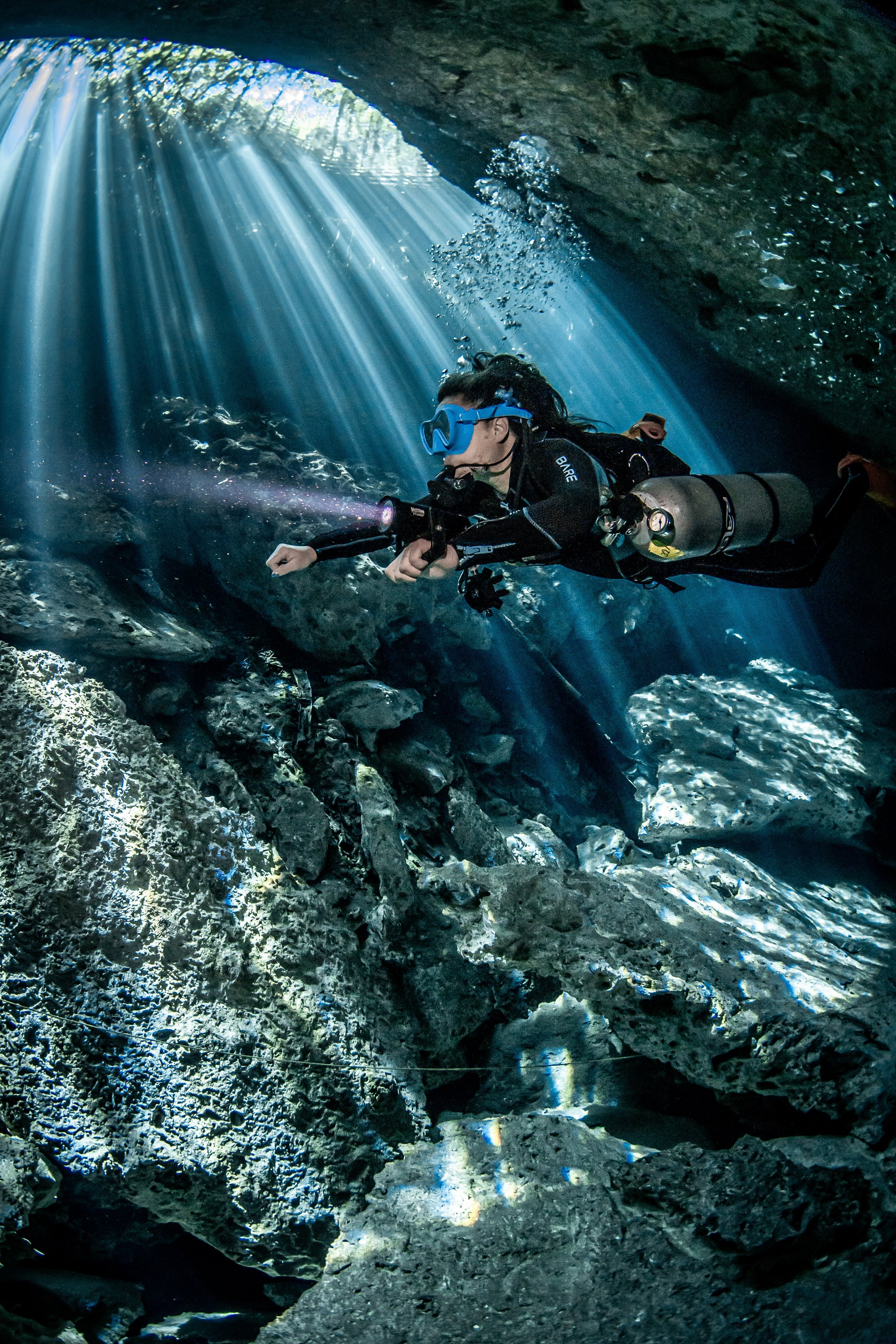Explore the Benefits of Sidemount Diving
It's a different approach where divers carry their tanks on their sides, usually below the shoulders and along the hips. This configuration was first used by cave divers to navigate tight spaces, but it's now becoming increasingly popular among technical divers as well.
DPV (Diver Propulsion Vehicle) Cave Training
DPV (Diver Propulsion Vehicle) cave training is a specialized form of cave diving that requires the use of an underwater scooter or DPV. This training is intended for experienced cave divers who wish to expand their skills and explore the depths of underwater caves more efficiently and safely.
For Women Interested in Cave Diving…
Cave diving is an exhilarating and challenging sport that requires significant training and experience. Women have made great strides in the field of cave diving, and there are many accomplished female cave divers who serve as role models for aspiring divers. If you're a woman who is interested in becoming a cave diver, here is some information to help you get started.
Propulsion Techniques
One of the first things you learn when you get into scuba diving is that you should never use your hands when you swim – because you don’t need to. Your fins create more forward momentum as you glide through the water than using your hands could ever accomplish. Propulsion techniques are essentially the different ways you can kick in order to move through the water more effectively.
Five Rules of Cave Diving
Cave diving is a great experience for any diver, and it’s easy to be drawn to the alien beauty of underwater caves, but it can be dangerous without the proper training. Cave diving does have extra risks, but it doesn’t need to be scary.
Cave Diving
Cave diving is a very technical form of diving which requires a lot of training in order to be done with confidence, however that doesn’t mean you shouldn’t do it. If you’re up for the challenge, cave diving can open places beyond your wildest imagination and take your diving to the next level.






